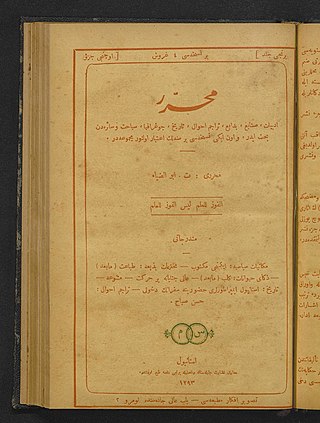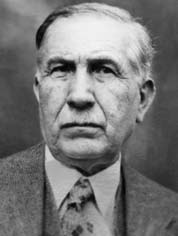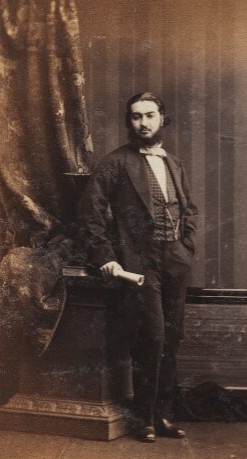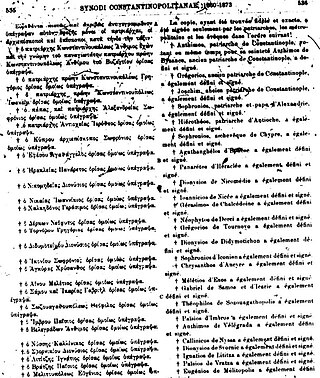Related Research Articles

The Bulgarian Exarchate was the official name of the Bulgarian Orthodox Church before its autocephaly was recognized by the Ecumenical See in 1945 and the Bulgarian Patriarchate was restored in 1953.
The rise of the Western notion of nationalism in the Ottoman Empire eventually caused the breakdown of the Ottoman millet system. The concept of nationhood, which was different from the preceding religious community concept of the millet system, was a key factor in the decline of the Ottoman Empire.
The National awakening of Bulgaria refers to the Bulgarian nationalism that emerged in the early 19th century under the influence of western ideas such as liberalism and nationalism, which trickled into the country after the French Revolution, mostly via Greece, although there were stirrings in the 18th century. Russia, as fellow Orthodox Slavs, could appeal to the Bulgarians in a way that Austria could not. The Treaty of Küçük Kaynarca of 1774 gave Russia the right to interfere in Ottoman affairs to protect the Sultan's Christian subjects.
Phyletism or ethnophyletism is the principle of nationalities applied in the ecclesiastical domain: in other words, the conflation between church and nation. The term ethnophyletism designates the idea that a local autocephalous church should be based not on a local (ecclesial) criterion, but on an ethnophyletist, national or linguistic one. It was used at the local council held in Constantinople on 10 September 1872 to qualify "phyletist (religious) nationalism", which was condemned as a modern ecclesial heresy: the church should not be confused with the destiny of a single nation or a single race.
Shortly after feminist ideology started gaining popularity in the mid-19th and early 20th century in the United Kingdom of Great Britain and Ireland and the United States, and slowly the rest of the world, the movement begun affecting changes to the social and political life of Greece. In 1952, Greek women gained the right to vote. However, other changes did not come until a few decades later, as with, for example, the introduction of sweeping changes in family law in 1983. Greece signed the Convention on the Elimination of All Forms of Discrimination against Women and ratified it in 1983.
Sappho Leontias was a Cypriot writer, feminist, and educator.

Bulgarian Millet was an ethno-religious and linguistic community within the Ottoman Empire from the mid-19th to early 20th century.

The Ottoman journal Muharrir was published in Istanbul in 8 issues from 1876 to 1878. The editor was Ebüzziya Tevfik (1849-1913), a member of the Young Ottomans to which also the journalists and authors İbrahim Şinasi, Namık Kemal and Ziya Pasha belonged. Ebüzziya published other political newspapers İbret (1872), Hadika (1872) and Sirac (1873) as well as literary journals, including Cüzdan and Mecmua-i Ebüzziya (1880-1912).

The Turkish History Thesis is a Turkish ultranationalist, pseudohistoric thesis which posited the belief that the Turks moved from their ancestral homeland in Central Asia and migrated to China, India, the Balkans, the Middle East, and Northern Africa in several waves, populating the areas which they had moved to and bringing civilization to their native inhabitants. The theory was developed within the context of pre-Nazi scientific racism, classifying the Turks as an "Alpine subgroup" of the Caucasian race. The intent of the theory was a rejection of Western European assertions that the Turks belonged to the "yellow or mongol" race. Mustafa Kemal Atatürk took a personal interest in the subject after he was shown a French language book that claimed Turks "belonged to the yellow race" and were a "secondaire" people.

Demetrius Stefanovich Schilizzi was an Ottoman-born Greek banker in London and Paris, and later a steamship owner in Constantinople. He was also the acting Italian consul in Calcutta for some time starting in 1864, and an amateur composer.
Hayriye-Melech Xhundj was a Circassian writer and teacher. She is considered one of the first Circassian female writers.
Diken was a weekly satirical magazine which was published in the period 1918–1920 in Istanbul, Ottoman Empire. It was one of the publications which were founded by Sedat Simavi, a well-known Turkish journalist. The magazine was one of the first Ottoman satirical publications which featured color cartoons.
Terakki-i Muhadderat was a weekly women's magazine which was published in the period 1869–1870 in Constantinople, Ottoman Empire. It was the first Ottoman publication which specifically targeted women.
Cem was a weekly political satire magazine which was first published in the Ottoman Empire and then in Turkey. It was published between 1910 and 1912 and continued its publication in the period 1927–1929. The magazine was named after its founder, Cemil Cem.
Al Nahla was a weekly political magazine which existed between 1870 and 1880 with one-year interruption. It was first published in Beirut and then in London. The magazine was one of the early examples of private journalism in Lebanon. It was also one of the earliest Arabic publications in London.
Mehâsin was a monthly women's magazine which was published in the Ottoman Empire between 1908 and 1909. It was one of the publications started in the aftermath of the Young Turk Revolution and was subtitled as Hanımlara Mahsus. It is known for being the first color women's magazine in the Empire.

Salim Al Bustani (1848–1884) was a Lebanese journalist, novelist and political figure who edited many publications with his father Butrus. He is known for being the pioneer of the genre of historical novel in Arabic.
Cemil Cem (1882–1950) was a Turkish diplomat, cartoonist and journalist who worked for the Ottoman satirical magazine Kalem and founded his own satirical magazine Cem.
Alexandra Papadopoulou was a Greek short story writer, columnist, teacher and publicist. She is recognized as the first Greek prose writer, with some feminist ideas. She was also a pioneer Greek publisher of literary publications, as a woman in a profession dominated by men.

The Council of Constantinople was a pan-Eastern Orthodox council held in Constantinople between August 29, 1872, and September 16, 1872, in response to the schism within a part of the Bulgarian ecclesiastical hierarchy. All the Eastern Orthodox patriarchs of the time participated in it. The council pronounced anathema on phyletism, which means the idea that ecclesiastical jurisdictions should be delineated not on territorial but national lines. The council also condemned racism.
References
- 1 2 3 Anastasia Falierou (2013). "Enlightened Mothers and Scientific Housewives: Discussing Women's Social Roles in Eurydice (Evridiki) (1870–1873)". In Duygu Köksal; Anastasia Falierou (eds.). A Social History of Late Ottoman Women: New Perspectives. Leiden; Boston, MA: Brill. p. 202. doi:10.1163/9789004255258_011. ISBN 978-90-04-25525-8.
- 1 2 Katerina Dalakoura (2015). "Between East and West: Sappho Leontias (1830–1900) and her Educational Theory". Paedagogica Historica. 51 (3): 301. doi:10.1080/00309230.2014.929593. S2CID 143466366.
- 1 2 Haris Exertzoglou (July 2018). "The "Woman Question" in the Greek (post)-Ottoman transition period". Clio. Women, Gender, History . 48 (2): 82. doi:10.4000/clio.14902. S2CID 159175111.
- 1 2 3 4 5 Katerina Dalakoura (2012). "Challenging Education in the Ottoman Greek Female Journals (1845-1907): A Declining Feminist Discourse". Knjizenstvo. 2 (2): 119–136.
- ↑ Maria Tamboukou (2004). "Tracing heterotopias: writing women educators in Greece". Gender and Education. 16 (2): 199. doi:10.1080/09540250310001690573. S2CID 216643918.